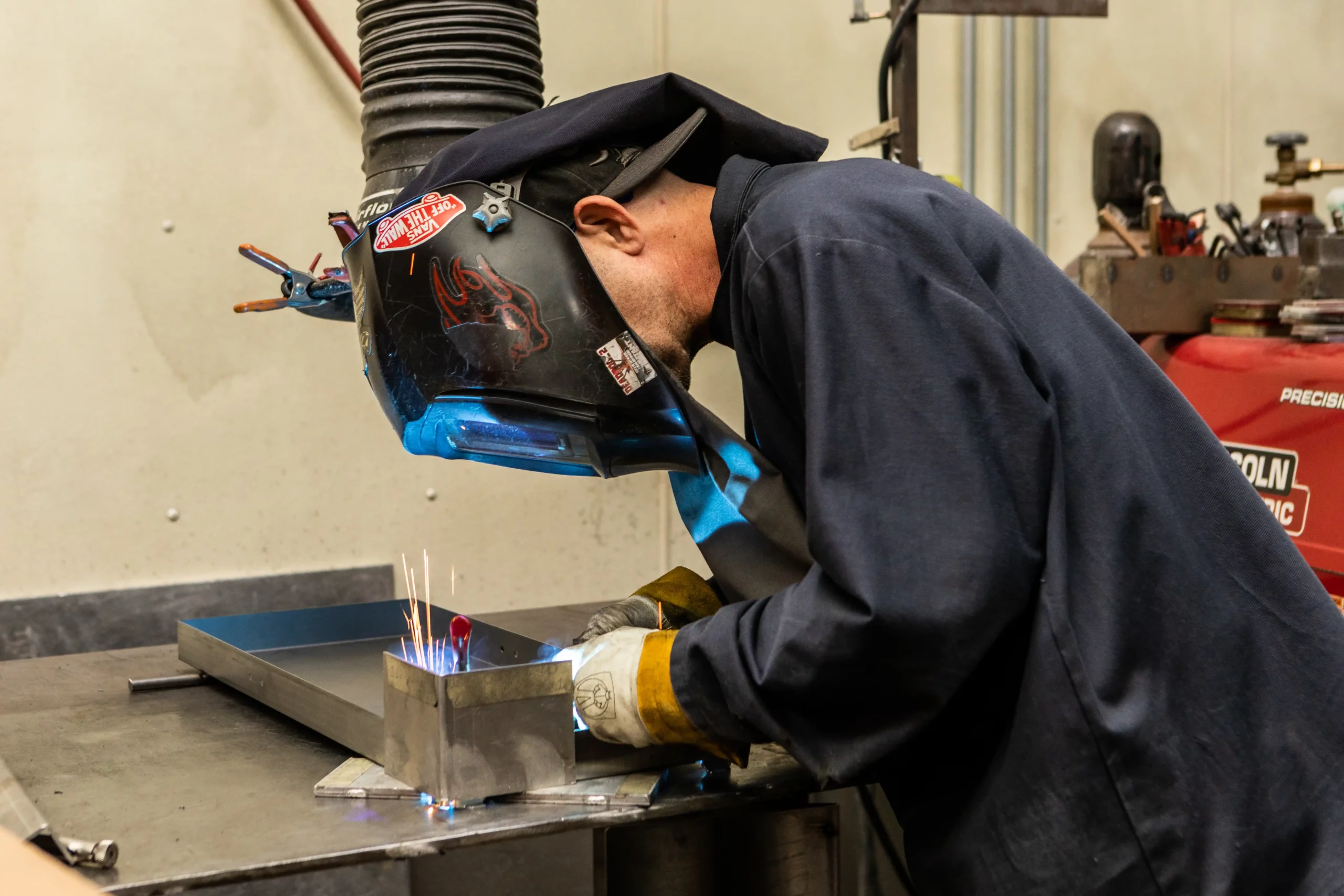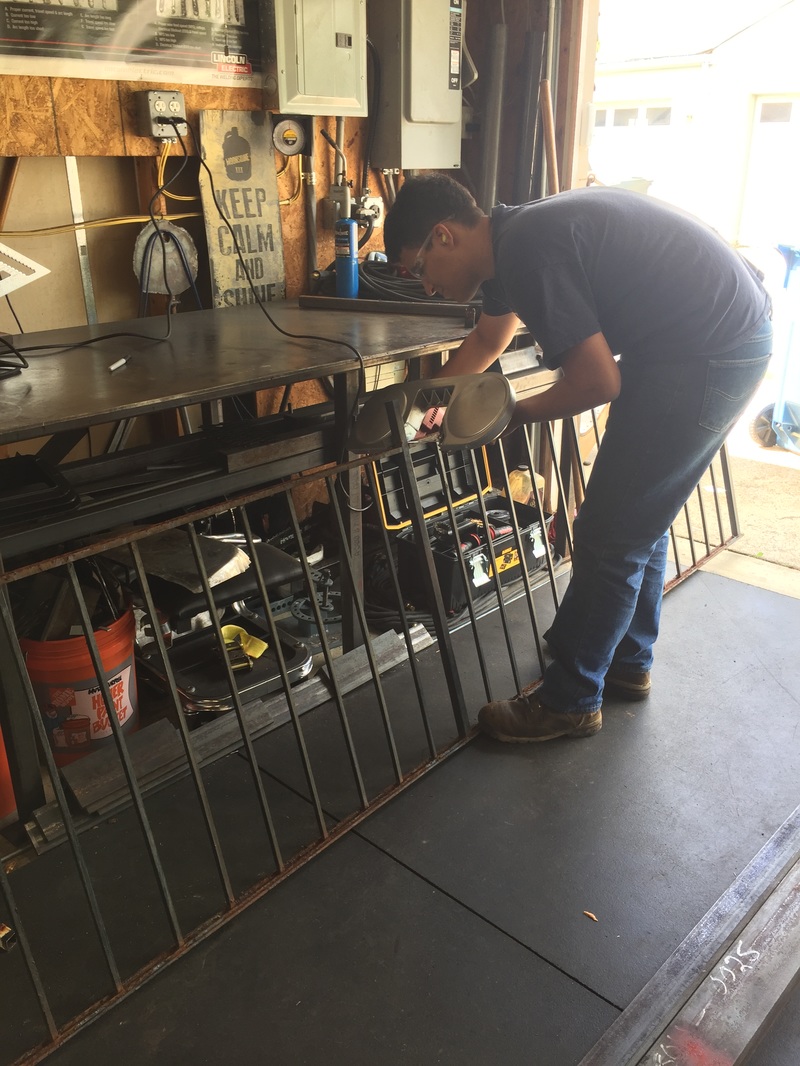Common Welding Fixing Issues and How to Address Them Effectively
Welding fixings usually experience a variety of problems that can endanger the integrity of the final item. Usual issues consist of insufficient infiltration, porosity, and misalignment, to name a few. Each flaw presents unique challenges that require details approaches for resolution. Comprehending these issues is essential for welders aiming to enhance their skills and results. This conversation will check out these common welding repair work issues and efficient approaches to address them.
Inadequate Infiltration
Insufficient infiltration takes place when the weld metal stops working to fully fuse with the base product, resulting in weak joints and possible architectural failures. This concern usually originates from insufficient warmth input, wrong electrode angle, or incorrect welding speed. Welders may run into poor penetration as a result of a mistake of the required specifications for a specific material thickness or type. Additionally, contamination on the base product's surface area can impede effective bonding, intensifying the issue. To address inadequate infiltration, welders should guarantee ideal setups on their tools and preserve a tidy work surface area. Normal assessment of welds is advised to determine any type of shortages early, enabling for prompt adjustments and the prevention of endangered structural integrity in bonded assemblies.
Porosity
Porosity is a typical problem in bonded joints that materializes as little gas bubbles entraped within the weld steel. This defect can jeopardize the integrity of the weld, causing minimized toughness and potential failing under stress. Belgrade Fabrication. Porosity usually occurs from contamination, moisture, or improper welding techniques, which permit gases to escape into the molten weld pool. To attend to porosity, welders need to assure appropriate surface area prep work, preserve a clean working environment, and use ideal welding criteria. Additionally, selecting the right filler material and securing gas can alleviate gas entrapment. Regular assessment and screening of welds can aid identify porosity early, assuring timely rehabilitative actions are taken, thereby protecting the quality and reliability of the welded framework
Misalignment
Misalignment in welding can arise from various factors, including improper setup and thermal development. Understanding the source is necessary for efficient resolution. Numerous improvement techniques are offered to realign elements and ensure structural integrity.
Reasons for Misalignment
Welding imbalance typically originates from a variety of underlying issues that can endanger structural integrity. One main cause is incorrect fit-up of elements prior to welding, which can lead to spaces and unequal surfaces. Variants in thermal growth throughout the welding procedure can also cause distortion, specifically if the materials being joined have various coefficients of development. Furthermore, inadequate fixturing and clamping may fail to hold components firmly in position, causing motion throughout welding. Poorly conserved devices, consisting of welding devices and tools, may present inconsistencies in the weld grain, more adding to misalignment. Driver error, stemming from inadequate training or experience, can likewise play a significant role in developing misaligned welds.

Correction Methods Readily Available
Dealing with imbalance efficiently calls for a mix of corrective techniques tailored to the details issues at hand. One common approach is using jigs or components to hold components in the proper setting throughout welding, guaranteeing regular alignment. In addition, preheating the materials can aid minimize distortion and enhance fit-up. For significant imbalance, mechanical realignment strategies, such as using hydraulic jacks or clamps, can be employed to fix the position before welding. Post-weld heat therapy might additionally be essential to soothe anxieties caused by imbalance. Finally, mindful inspection and adjustment throughout the arrangement phase can protect against imbalance issues from ending up being substantial issues, advertising a smoother welding process and enhancing general architectural honesty.
Distortion
Distortion is a common difficulty in welding that can develop from various elements, including irregular cooling and heating. Comprehending the sources of distortion is necessary for executing efficient avoidance methods. Addressing this issue not just boosts structural integrity however also boosts the total high quality of the weld.
Reasons for Distortion
When based on the extreme warm of welding, products usually undergo modifications that can cause distortion. This sensation primarily arises from thermal expansion and tightening during the welding process. As the weld location warms up, the material expands; upon cooling, it gets, which can create internal stress and anxieties. Additionally, unequal home heating throughout a workpiece can exacerbate these anxieties, resulting in warping or bending. The kind of product also plays a substantial role; steels with differing thermal conductivity and coefficients of development may react in different ways, leading to unforeseeable distortions. Inadequate joint design and inadequate fixturing can add to misalignment during welding, boosting the chance of distortion. Understanding these reasons is important for effective welding repair service and avoidance methods.
Avoidance Techniques
Efficient prevention techniques for distortion during welding concentrate on regulating warmth input and ensuring appropriate joint layout. Preserving a constant warmth input helps to lessen thermal growth and contraction, which can cause distortion. Making use of techniques such as preheating the workpiece can also lower the temperature level gradient, advertising uniform home heating. Additionally, choosing ideal joint layouts, such as T-joints or lap joints, can enhance stability and lower stress and anxiety concentrations. Implementing correct fixturing to secure the work surfaces in position better aids in maintaining placement throughout the welding process. Staggered welding sequences can distribute heat a lot more equally, stopping local distortion. By applying these approaches, welders can substantially decrease the probability of distortion and boost the overall quality of their welds.
Cracking
Cracking is a typical problem come across in welding repairs, commonly arising from numerous aspects such as incorrect air conditioning prices, material option, or inadequate joint preparation. The event of splits can considerably jeopardize the integrity of the weld, leading to possible failures during operation. To address this concern, welders should initially assess the origin, guaranteeing that materials work and suitably picked for the details application. Furthermore, managing the cooling rate throughout the welding process is vital; quick cooling can induce stress and anxiety and cause splitting. Correct joint design and prep work also add to lessening the danger. Executing these methods can enhance weld top quality and durability, ultimately decreasing the probability of breaking in completed weldments.

Incomplete Blend
A substantial concern in welding repairs is insufficient blend, which occurs when the weld metal does not adequately bond with the base product or previous weld passes - visit site Belgrade Fabrication. This defect can bring about weaknesses in the joint, potentially compromising the integrity of the welded framework. Elements adding to incomplete blend consist of inadequate heat input, incorrect welding method, and contamination of the surfaces being signed up with. To resolve this concern efficiently, welders must ensure proper pre-weld cleansing and surface area prep work, in addition to adjust their welding specifications to attain adequate infiltration and blend. Normal assessment during the welding procedure can also aid identify insufficient fusion early, permitting Get More Info timely corrective measures to enhance the general high quality of the weld
Overheating
While welding repair services can boost structural honesty, overheating offers a substantial challenge that can result in product deterioration. Excessive heat during welding can alter the mechanical homes of metals, resulting in minimized stamina, increased brittleness, and bending. This sensation is especially critical in high-stress applications where architectural reliability is critical. Determining getting too hot can involve aesthetic inspections for staining or distortion, as well as checking temperature during the welding procedure. To mitigate the dangers related to getting too hot, welders should utilize ideal strategies, such as regulating warm input, adjusting travel speed, and using ideal filler materials. In addition, implementing pre- and post-weld heat therapies can assist recover material properties and boost the total quality of the repair work, making certain long-lasting performance and security.
Frequently Asked Questions
What Are the Typical Signs of a Welding Problem?

How Can I Check My Welds for Quality?
To examine welds for quality, one can use visual evaluations, ultrasonic screening, and radiographic approaches. Each method guarantees structural honesty, recognizes problems, and validates adherence to specified standards, inevitably improving the dependability of the welded joints.
What Security Precautions Should I Take While Welding?
When welding, one ought to focus on safety by putting on ideal personal protective equipment, making certain proper air flow, securing flammable materials away, keeping a tidy work space, and being mindful of surroundings to stop crashes and injuries.
Can I Fix a Weld Without Redoing the Entire Joint?
Fixing a weld without renovating the entire joint is feasible, depending upon the damages (Montana Mobile Welding and Repair Fabrication). Methods such as grinding, adding filler material, or utilizing a welding procedure can successfully attend to specific imperfections while preserving the bordering framework
What Equipment Are Crucial for Efficient Welding Services?
Vital tools for efficient welding repair work consist of a welding device, cable brush, mill, safety gear, clamps, and filler products. Each tool plays an essential function in ensuring high quality and have a peek here safety and security during the fixing process. Porosity typically emerges from contamination, dampness, or inappropriate welding techniques, which enable gases to run away into the molten weld swimming pool. Inadequately maintained devices, including welding makers and devices, may introduce incongruities in the weld grain, additional adding to imbalance. When subjected to the extreme warmth of welding, materials usually undergo changes that can lead to distortion. Cracking is a common concern come across in welding fixings, often resulting from various variables such as inappropriate cooling rates, product choice, or poor joint preparation. A considerable problem in welding repairs is incomplete combination, which happens when the weld steel does not properly bond with the base product or previous weld passes.